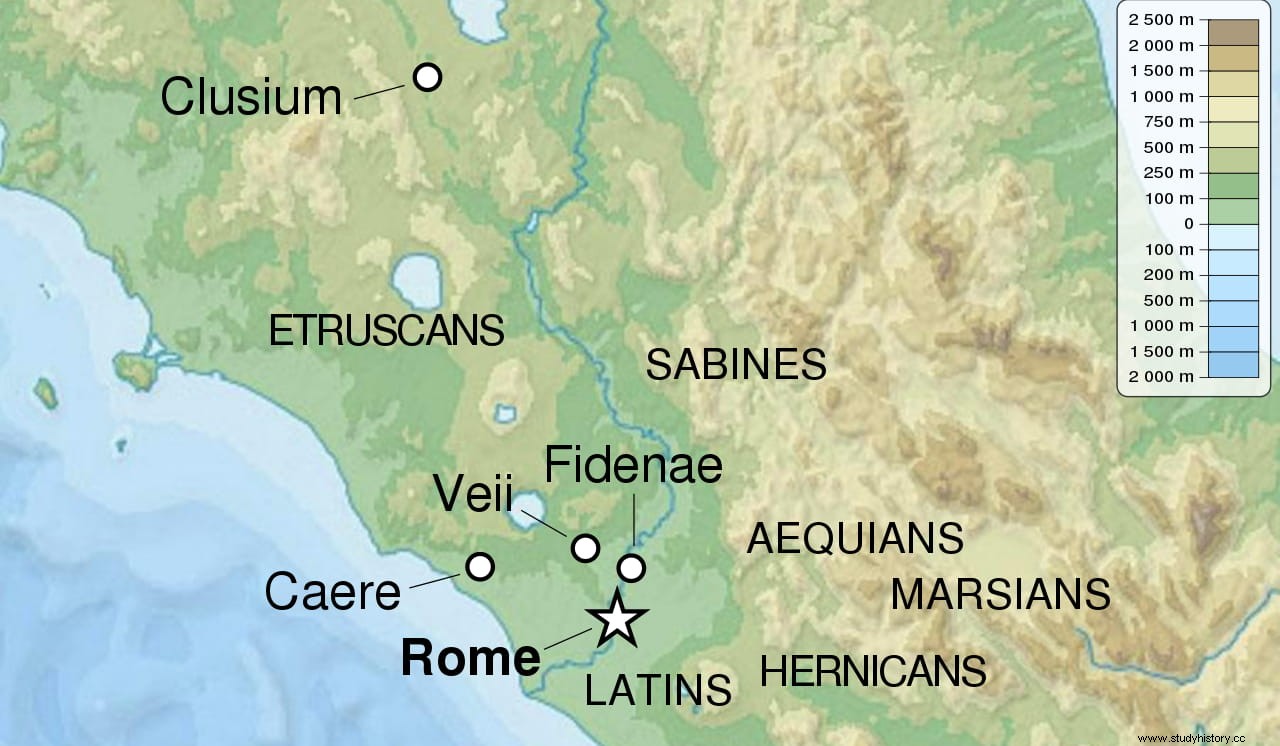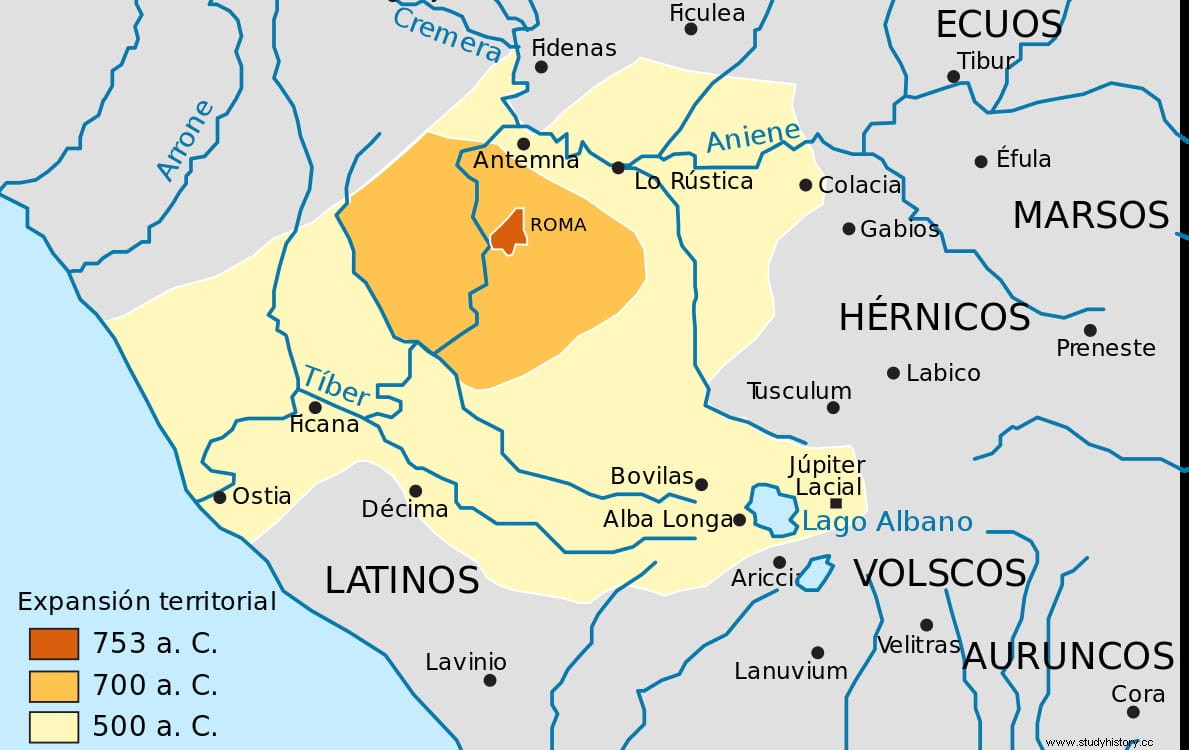Mass attendance at a public show considerably multiplies the potential possibility that the degree of tragedy it produces will be greater in the event of an accident or any other type of negative incidence. That is why nightclubs, concerts and football stadiums are usually the places where the most victims are recorded, as unfortunately we have recently seen in the Las Vegas attack. But this is not something exclusively contemporary and, in fact, the most serious example recorded in history dates back almost two millennia:the collapse of the Fidenas amphitheater.
Fidenas (or Fidenae in Latin) was a city in Lazio, a region of the Italian peninsula located between the lower reaches of the Tiber River, the Ausonian Mountains and the Apennines, bordering Etruria to the north and Campania to the south. Territory that the Latin, Volscan, Faliscan, Sabino, Ecuo, Ausonian, Aurunco, Hernian and Osco-Umbrian peoples shared out ancestrally, the future of Latium It was closely related to the expansion of the Romans, now allies, now enemies, who definitively secured their rule in the 1st century BC. in the context of the so-called Social War.
The city in question was located eight kilometers from Rome, with which it was linked by the Via Salaria, the long road of two hundred and a half kilometers that connected the Tyrrhenian Sea with the Adriatic and owed its name to the fact that the Sabines used it to transport the salt to the Tiber. In other words, Fidenas was at a strategic crossroads and the Romans always considered it a dangerous border enclave, since it was an Etruscan spearhead in Latin territory; in fact, the neighboring city of Veii, which was about ten miles north of Rome and was the richest in the Etruscan League, had Fidenas in its orbit of influence for a long time in the wars it had with the Roman Republic since since the time of Romulus, in the 8th century BC, according to tradition.

This explains that the Tarquins, settled in the Etruscan zone since Tarquinius the Proud took refuge there (the last king of Rome), incited the Sabines to rise up against the Romans and once again the drums of war sounded. This was favorable to Rome and determined the future of Fidenas, his ally who had broken that commitment. Tito Livio says that the Romans managed to establish a colony there in 474 BC. but the Fidenites rebelled and expelled them thirty-six years later with the help of the Etruscans and Faliscans. The dictator Marco Furio Camilo conquered Veii in 396 BC. and he finished the war with his ancestral enemy but, by then, Fidenas had also fallen at the hands of the legions; It was after two sieges in the years 435 B.C. and 426 BC. His defeat meant the destruction of the place and the enslavement of its inhabitants, ending the Etruscan presence on the right bank of the Tiber.
But, although it was apparently deserted for a time, that did not mean its end but rather the beginning of a new Romanized stage because it was rebuilt on the eastern slope of the hill on which it stood and where Villa Spada stands today (a eighteenth-century neoclassical house that houses the Tapestry Museum). It is believed that the ancient acropolis was located there, although no archaeological record has been found to prove it with absolute certainty, beyond some tombs. The remains found correspond to the later Roman period, developed along the aforementioned Via Salaria, and the curia stands out mainly, which preserves an inscription from the local Senate dedicated to Emperor Marcus Aurelius (who lived in the 2nd century AD).
Now, although the archaeological remains are limited, we also have the historiographical sources and although these must always be handled with caution, the works of Tacitus and Suetonius leave us testimony that in Fidenae there was also an important infrastructure very characteristic of the Roman world:a amphitheater, the public area where the munera games (gladiators) and venationes (beast fights) were held, and where other shows were also held (naumaquias executions...). The amphitheaters were born precisely in Etruria and Campania around the second century BC

Of course, at first they did not have the magnificent aspect or the enormous dimensions that the Colosseum would reach centuries later. Often they were made of simple brick and sometimes not even that, with wood being the building material. Such was the case of the Fidenas, built by a businessman named Atilio, who, being a freedman, lacked sufficient means to pay for such a large work and opted for that cheaper material, also hoping to recover the investment by selling as many tickets as he could. Tacitus narrates:«In Fidenas, a certain Atilio, to celebrate the game of gladiators, without solidifying the foundations well, nor chaining the beams or superimposed tables, like the one who had moved not because of the abundance of money that had or to win the favor of the citizens, but only for the interest of a vile profit» .
It is unknown what the real capacity would be, but the fact is that, in the year 27 A.D., around fifty thousand spectators («[people] of all ages and sex attended» ) packed the stands, eager to attend a few games after a period in which they had been banned by Tiberius. When the ban was lifted, they flocked. The exact causes are also unknown (design flaw, poor quality wood?), but the stadium collapsed killing tens of thousands of attendees:twenty thousand according to Suetonius, fifty thousand according to Tacitus. The number of wounded must have been impressive as well. Tacitus' account is devastating:«After finishing removing the ruins, each one ran to kiss and embrace their dead; and many times, because of his disfigured face, or because of his resemblance or his age, confusion and not a small contrast arose when each one recognized his own ».
Suetonius tells how Tiberius, who was in his villa in Capri, had to interrupt his holiday to travel urgently to the city and coordinate the tasks of helping the victims "because of the repeated pleas of the people" . The tragedy, as is currently the case, also brought about a change in the regulations when the Senate, explains Tacitus, decided to require a minimum patrimony of four hundred thousand sesterces from those who aspired to organize shows, the same amount that was required to access equestrian class. It also established the obligation that henceforth solid amphitheaters be built and that they be duly approved by inspectors appointed ad hoc . Atilio, by the way, was exiled, although Tacitus does not specify what said exile consisted of (it could have been literal or only be vetoed for new concessions).
